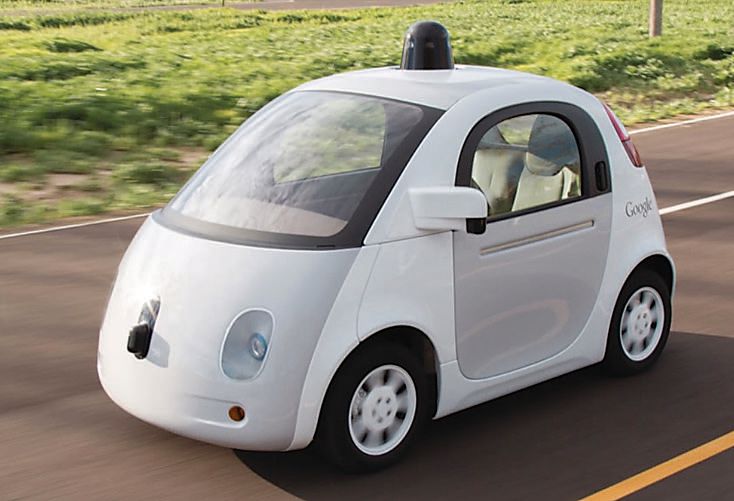The Tribology of Things
Dr. Ali Erdemir | TLT President's Report November 2016
The convergence of our virtual and physical worlds is yielding safer and more efficient machines and a cleaner environment.
 Self-directed autonomous cars might be driverless, but they will never be frictionless or immune to the wear and tear inherent in all machines.
Self-directed autonomous cars might be driverless, but they will never be frictionless or immune to the wear and tear inherent in all machines.
https://www.google.com/selfdrivingcar/
IN OUR EVERYDAY LIFE, planes, trains and automobiles play an important role in our physical mobility and carrying much of the precious cargoes that feed our daily needs. With an ever-extending wireless network, Internet and all of the high-powered electronics hardware, our mobility and connectivity in the digital world also have improved tremendously over the last decade and recently culminated in the creation of the so-called Internet of Things (IoT).
Increased capacity and versatility of many of the digital devices we use every day are obviously the key enablers for such a sudden increase in the interconnectivity between our physical and virtual worlds. Hence, the IoT can be regarded as the backbone of the rapidly growing information society, enabling more advanced connectivity not only among us but also many of the devices or systems we rely on or encounter in our daily lives.
As IoT expands and becomes more mainstream, we can expect more exciting developments toward the realization of a truly digital world in which interconnected and sustainable communities are flourishing and taking advantage of much smarter electronics, home appliances and autonomous vehicles. These machines not only think and decide accurately but also talk to one another and act in a manner that yields better efficiency, safety and environmental quality, thus improving the quality of our life and ultimately empowering the whole society.
Long before IoT and throughout the last century, much of our passion has centered around advancing our vehicular mobility/connectivity. As a result, the automobiles of today are far more efficient, safe and environmentally friendly than their predecessors from a decade ago. Realizing the ever-increasing potential of IoT, auto manufacturers and Internet companies have joined forces toward the realization of the next best thing or revolution in ever expanding mobility/connectivity: self-driving, autonomous vehicles capable of navigating through traffic without human intervention or involvement.
Beta testing of this concept has been going for a while and now has reached a point where full-scale demonstration in selected cities is under consideration. In fact, a major app-based taxi service provider is testing the concept in a major metropolitan area. In short, there is no doubt that integration of virtual mobility with actual mobility may indeed leapfrog the transportation field in efficiency, safety and emissions fronts. In this new era of transportation, humans may finally take the back seat and enjoy the ride without getting stressed out.
It is important to remember that while these vehicles may be driverless, they will never be frictionless or immune to wear and tear because every mobile system generates some friction and is subject to adhesion, abrasion and, hence, wear. In the virtual world, things could be smooth, accurate and flawless, but in the real world objects deal with friction and wear. In short, the Tribology of Things (ToT) will continue to be an important and integral part of future vehicles, regardless of IoT. Specifically, many moving mechanical parts in these vehicles—together with all of those micro-electro-mechanical systems, sensors and actuators which decipher digital commands and turn them into mechanical action and automation—will require advanced tribological designs and high-performance materials and lubricants to deliver their critical functions flawlessly and accurately over their lifetimes. Slight wear or degeneration of their interacting surfaces might cause unintended consequences and impair the viability of all vehicles. Despite the latest and greatest technological innovations in our tribology field, research should still continue with an emphasis on further curtailing parasitic energy losses due to friction in future autonomous vehicles.
Overall, the tribology community welcomes IoT and autonomous vehicles and will continue to fulfill its obligations toward the development of more effective solutions to tribological issues that can lead to greater efficiency, durability and a cleaner environment.

Ali Erdemir is a Distinguished Fellow at Argonne National Laboratory in Lemont, Ill. You can reach him at erdemir@anl.gov.